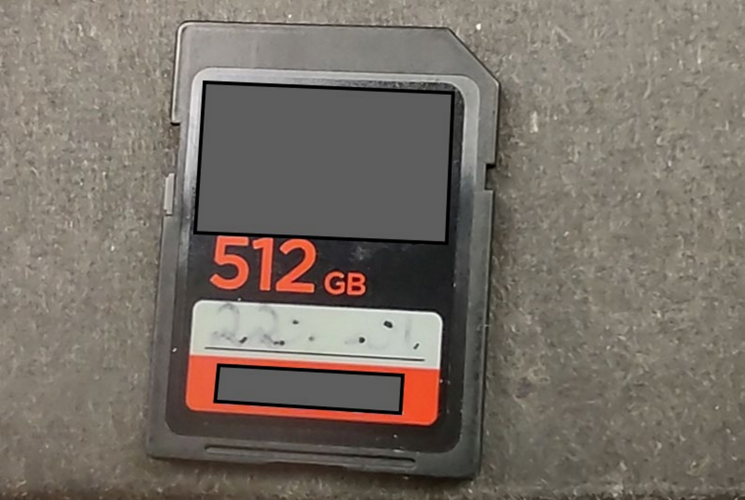
(NTSB via SWNS)
By Dean Murray
Recovery teams found an undamaged camera memory card on the doomed Titan submersible – complete with eerie photos.
The National Transportation Safety Board (NTSB) investigated after a hardened underwater camera was spotted in the wreckage of OceanGate’s deep-sea vessel.
The Titan, valued at about $4.2 million, imploded on June 18, 2023 about 372 miles south-east of St John’s, Newfoundland, killing all five people on board, including OceanGate chief executive Stockton Rush.
The recovered camera had been mounted on the exterior of the hull and was designed to record video and still images up to a rated depth of 6,000 meters.

(NTSB via SWNS)
The device was able to survive as its body is made of titanium, and the camera’s front optical window is made of synthetic sapphire crystal to protect the lens and electronics inside.
The camera was delivered to NTSB's Vehicle Recorder Laboratory for analysis, where they found the camera’s outer casing was intact, but it was noted that the camera’s lens, as viewed through the sapphire optical window, was shattered.
Investigators were able to extract 12 still images and 9 videos from an SD memory card stored within the device.
Three videos were identified as having been taken underwater, all with similar lighting conditions and the immediate environment around the camera being the same.

(US Coast Guard/Pelagic Research via SWNS)
The NTSB was able to identify the Launch and Recovery System (LARS) used to deploy and recover the OceanGate Titan submersible during its training or missions.
One underwater video shows a diver near the Titan with flippers and what appears to be an oxygen tank.
NTSB reported: "OceanGate was able to identify the diver in the video from his diving suit and gear. This diver was only involved in Missions 1 and 2 of 2023, and was only present for shallow water training, likely near Bay Bulls, Newfoundland. The accident dive was 2023 Mission #5."
Other images and videos were deduced as having been taken in May 2023, a month before the disaster.

(NTSB via SWNS)
They show waterside scenes at the quay in Holyrood in Canada and shots taken inside the Remotely Operated Vehicle workshop at the Marine Institute’s main campus in St John’s, Newfoundland and Labrador.
The NTSB report said that data was able to be stored to onboard camera memory, or to an attached computer, dependent on configuration.
They concluded: "It is likely that the camera was being configured to store its data to the onboard computer on May 16th, with one image being stored accidentally to the camera’s SD Card and then configured properly to store data to the computer on board the submersible.
"No data with a timestamp after May 16th was found on the camera, so it is likely that none of the data recorded on the SD Card were of the accident voyage or dive."
























(0) comments
Welcome to the discussion.
Log In
Keep it Clean. Please avoid obscene, vulgar, lewd, racist or sexually-oriented language.
PLEASE TURN OFF YOUR CAPS LOCK.
Don't Threaten. Threats of harming another person will not be tolerated.
Be Truthful. Don't knowingly lie about anyone or anything.
Be Nice. No racism, sexism or any sort of -ism that is degrading to another person.
Be Proactive. Use the 'Report' link on each comment to let us know of abusive posts.
Share with Us. We'd love to hear eyewitness accounts, the history behind an article.